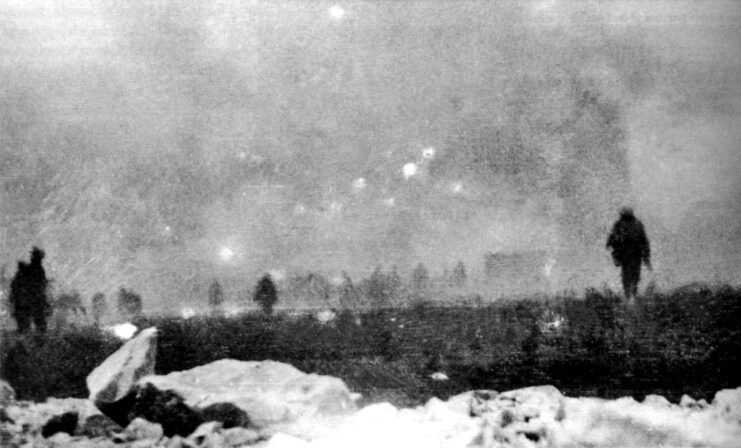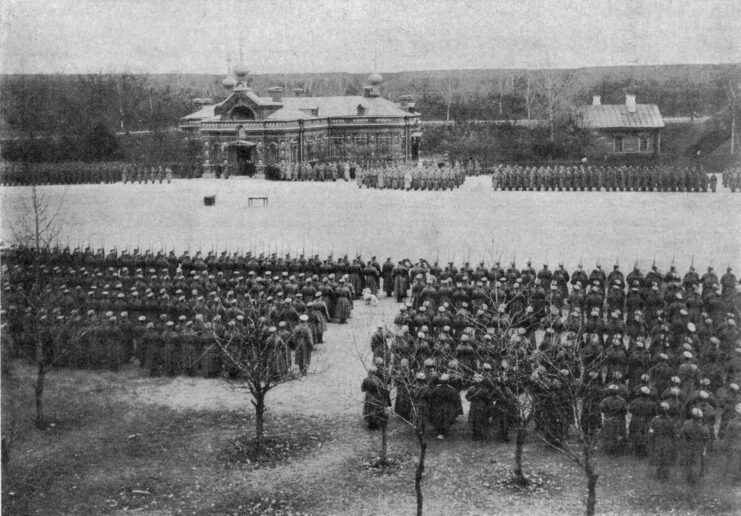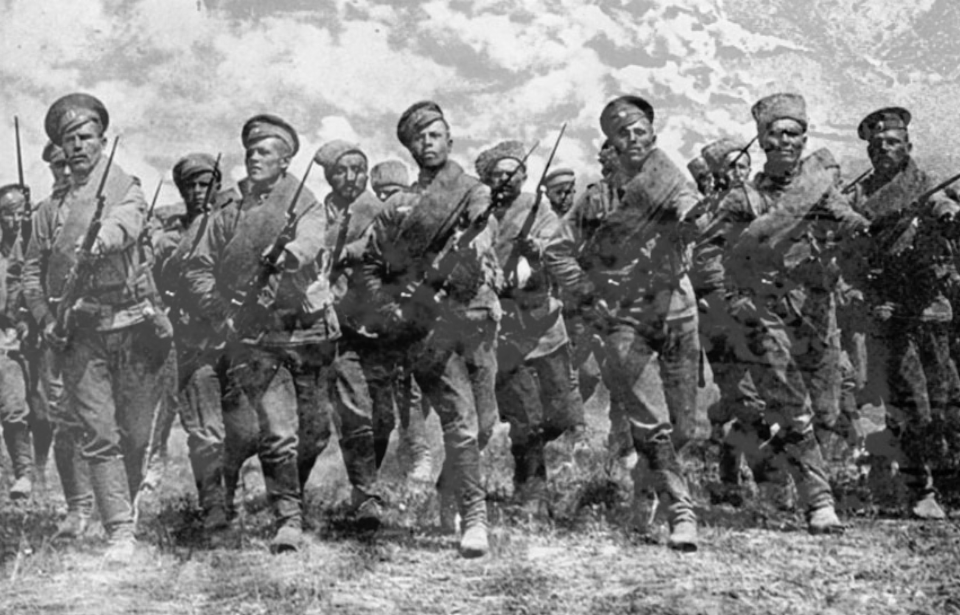The combat of the First World War marked a stark departure from conventional warfare, thanks to the introduction of tanks and innovative weaponry. Among the deadliest innovations was poison gas, which drifted across the battlefield, causing excruciating and horrific fatalities. The Battle of Osowiec Fortress witnessed the Germans employing such tactics, resulting in such harrowing consequences for the Russians that the encounter earned the grim moniker, “Attack of the Dead Men.”
Chemical warfare during World War I

Chemical warfare made its debut on the battlefield during the onset of the Second Battle of Ypres during the First World War. The engagement was fought for control of a crucial strategic area, and the Germans were determined to secure victory, even if it meant resorting to the use of a perilous and somewhat uncontrollable weapon.
At around 5:00 PM on April 22, 1915, German soldiers unleashed canisters containing a deadly mixture of poison gases, bromine and chlorine. The noxious fumes drifted across the battlefield toward the Allied line, compelling two colonial French divisions to abandon their positions in a desperate attempt to escape the lethal vapor. With no specialized equipment to counter the attack, troops were forced to fashion makeshift respirators from linen.
As a result of this battle, the British withdrew to a new defensive line. Soon after, poison gas became a familiar presence on the Western Front, despite being deemed a war crime under both the 1899 Hague Declaration Concerning Asphyxiating Gases and the 1907 Hague Convention on Land Warfare. Both sides resorted to its use and continued to refine the types of gases deployed, with the British using gas for the first time during the Battle of Loos in September 1915.
Among the most notorious gases used during the war was mustard gas, which made its battlefield debut in July 1917. While not as immediately lethal as chlorine, mustard gas had the sinister quality of being heavier than the surrounding air, allowing it to linger and cause harm long after its initial deployment, persisting in the soil for weeks. Its effects were savage, inflicting severe injuries upon the unlucky soldiers who came into contact with it, with the pain being described as unbearable.
Osoweic Fortress

The setting for the August 1915 engagement was Osoweic Fortress, in what is now northeast Poland. Built by the Russian Empire in the previous century, it was an epic thorn in the side of Germany’s plans for conquest – and that was the point. It was located in an area where the surrounding marshland could be crossed, and the desire was to prevent the Germans from doing so.
During World War I, the Germans attempted to take it on several occasions, surviving heavy artillery fire – even the Russians were surprised it had held up to such an onslaught. To get inside, they had to cross two sets of trenches before facing the walls and battlements, where they could be picked off by shooters. Amazingly, this multi-layered defense system meant the Russians didn’t need many soldiers to man the fort.
The first attack in September 1914 saw the Russians take on 40 infantry battalions of the German 8th Army and heavy artillery, successfully pushing them back. The second the following winter saw another heavy bombardment repelled, but the Germans weren’t ready to give up just yet…
Launching the Battle of Osoweic Fortress

Kaiser Wilhelm II needed Russia out of the way and reducing Osoweic Fortress to rubble was a major priority. In August 1915, he brought out the big guns. There were guns, of course, but this is in reference to a human-shaped weapon: Field Marshal Paul von Hindenburg. Accompanying him on his march to the site were 14 infantry battalions, a sapper battalion, 30 artillery batteries and 24-30 heavy siege guns.
With approximately 900 Russians against an estimated 7,000 Germans, the odds looked hopeless. Still, the mighty structure of Osoweic Fortress had served them well before – no doubt it would do so again. However, this time there was a factor the Russians hadn’t faced before. The enemy had brought with them a deadly cocktail to inflict maximum damage.
Deploying chlorine gas on the battlefield

Paul von Hindenburg wasn’t just packing bullets and bombs. Thirty canisters of chlorine gas were lined up to emit the poisonous substance into the fortress and flush out the enemy. It was just a matter of waiting for the correct weather conditions. When God pushed the wind in the right direction at 4:00 AM on August 6, 1915, that’s when the gruesome assault began.
Before the chlorine even reached the Osoweic Fortress, its terrible effects were observed. The gas looked like something out of a horror movie. Accounts mention a green and yellow cloud floating menacingly toward the Russians, which turned the grass black – and if it did that, it would do far worse to the inside of the soldiers’ lungs.
The reason this strategy worked so well was the Russians’ lack of protective equipment against chemical warfare. As the toxic gas worked its way around the structure, the troops were said to have put their undershirts across their faces. These garments were soaked in either water or urine.
Attack of the Dead Men

What happens when chlorine gas is inhaled? It combines with the body’s moisture and creates hydrochloric acid. The Russians were essentially being eaten alive by the air around them. With such a devastating weapon, it seemed they were done for. Many perished through Paul von Hindenburg’s diabolical move, but they weren’t beaten yet, as the Germans were about to discover.
Lt. Vladimir Kotlinsky was determined to hold back the enemy. He and 60 other men suffered terribly, covered in gory bandages and coughing up parts of their lungs as the acid did its worst. Despite this, they charged the Germans as they entered the fortress.
It was a bloodbath… for the Germans. As far as the Kaiser’s finest were concerned, they were fighting a group of undead monsters. The sight was so frightening they retreated. Some were so out of their minds that they stumbled into barbed wire.
What happened to Osoweic Fortress after the Attack of the Dead Men?

Osoweic Fortress fell following the Attack of the Dead Men, but not by German hands. The Russians later took it apart themselves that month, when they realized the situation was hopeless. The soldiers that day managed to cheat death, if only briefly, to repel the enemy and maintain their might for as long as humanly possible.
More from us: Zone Rouge: The WWI-Era Battlefields That Are Still Dangerous Over 100 Years Later
Want War History Online‘s content sent directly to your inbox? Sign up for our newsletter here!
While he’d led a fierce resistance against the Germans, Vladimir Karpovich perished later that evening. Prior to his death, he’d transferred control of Osoweic Fortress to the 2nd Osovetska Sap Company and Władysław Strzemiński, who himself had been severely injured in the attack.
